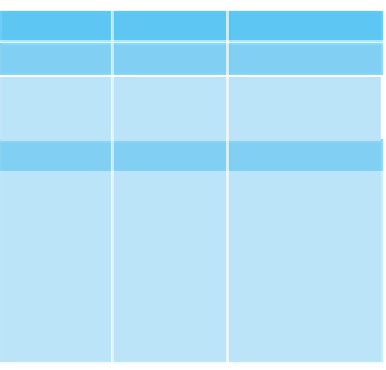Database Reference
In-Depth Information
Faculty
FacultyNum StudentNum CommitteeCode
123
12805
ADV
123
12805
HSG
123
12805
PER
123
24139
ADV
176
123
24139
HSG
123
24139
PER
444
57384
HSG
456
24139
CUR
456
36273
CUR
456
37573
CUR
FacStudent
FacCommittee
FacultyNum StudentNum
FacultyNum CommitteeCode
123
123
12805
ADV
123
24139
123
HSG
444
57384
123
PER
456
24139
444
HSG
456
36273
456
CUR
456
37573
FIGURE 5-16
Conversion to fourth normal form
Figure 5-17 summarizes the four normal forms.
Normal Form
Meaning/Required Conditions
Notes
First normal form
No repeating groups exist
Second normal form
First normal form and no non-
Automatically second normal form
key column is dependent on only
if the primary key contains only a
a portion of the primary key
single column
Third normal form
Second normal form and the only
Actually Boyce-Codd normal
determinants are candidate keys
form (BCNF)
Fourth normal form
Third normal form and no
multivalued dependencies exist
FIGURE 5-17
Normal forms
AVOIDING THE PROBLEM WITH MULTIVALUED DEPENDENCIES
Any table that is not in fourth normal form suffers some serious problems, but there is a way to avoid dealing
with the issue. You should have a design methodology for normalizing tables that prevents this situation from
occurring in the first place. You already have most of such a methodology in place from the discussion of the
first normal form, second normal form, and third normal form normalization processes. All you need is a
slightly more sophisticated method for converting an unnormalized table to first normal form.












































